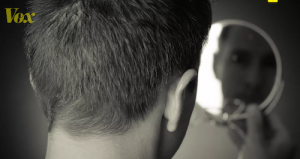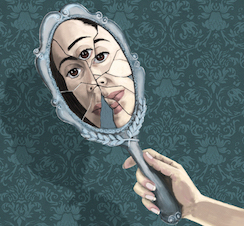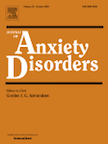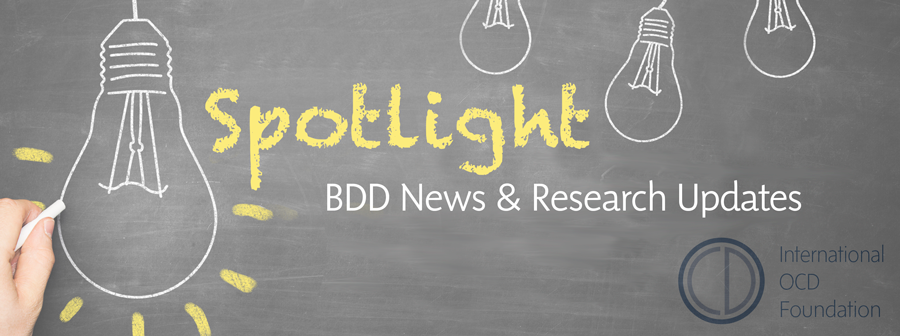Research has always played a key role in our work at the International OCD Foundation. We are committed to finding and promoting the most effective treatment methods for OCD and related disorders, including body dysmorphic disorder (BDD), and understanding the neurobiology behind and causes of these disorders.
With these goals in mind, we’re excited to announce the launch of Spotlight: BDD News & Research Updates, a new blog series aimed at bringing you the latest research news and information concerning OCD and related disorders. Each quarter, we’ll round up the biggest and most interesting news in the field of BDD research — from highlighting work by members of our Scientific & Clinical Advisory Board to the latest headlines in journals and popular media alike — this new series will serve as a useful, engaging update you’ll be excited to share with friends, family, and colleagues interested in learning more about BDD and related disorders. This new blog series is part of our larger Spotlight series, with monthly news updates on OCD research & news, and quarterly features on hoarding disorder, pediatric OCD, and BDD.
To receive a copy of this new series directly in your inbox each month, subscribe to our new “Spotlight: News & Research Updates” email here.
Making Headlines
BDD advocates and stories making news around the globe this fall
Your Bro’s A Billionaire: What Problems Could You Have….?
Psych Central, September 2015
Brian Cuban, the younger brother of Mark Cuban, blogs about his experiences about his struggles with body dysmorphic disorder while dealing with a famous sibling constantly in the spotlight.
Muscle dysmorphia: One in 10 men in gyms believed to have ‘bigorexia’
BBC Newsbeat, September 2015
It’s feared one in 10 men training in UK gyms could have a condition that can lead to depression, steroid abuse and even suicide.
I was so ashamed of my body that I locked myself in my apartment for days. Here’s why.
Vox, October 2015
“My condition has a name: body dysmorphic disorder. It means obsessive preoccupation with a perceived defect in physical appearance. But I wouldn’t learn that until later. When I locked myself in my apartment for three consecutive days, it had no name.” John Paul Brammer shares his story: [link]
SCB Showcase
Members of the IOCDF Scientific and Clinical Advisory Board (SCB) are among the best clinicians and investigators in the United States who treat and/or conduct research in the field of OCD and related disorders. Here, we recognize SCB members whose recent work focuses on BDD.
Mental health: Monsters in the mirror
Nature, October 2015
Research currently being conducted by Scientific and Clinical Advisory Board members Sabine Wilhelm and Jamie Feusner focuses on how brain circuiting plays a role in BDD, and what can be done to treat BDD more effectively using these new insights into “rewiring” the brain.
Research Corner
A monthly roundup of the latest in BDD research from scientific journals.
Anorexia nervosa and body dysmorphic disorder: A comparison of body image concerns and explicit and implicit attractiveness beliefs
Body Image, June 2015
Although body image is central to the etiological models of anorexia nervosa and body dysmorphic disorder, studies comparing body image and beliefs about attractiveness between the disorders are rare. In addition to supporting previous research with regard to comparable body image disturbance, this study also showed that beliefs regarding the importance of appearance (e.g., “one must be attractive to be successful”) might be a fruitful target for therapy across both disorders.
Facial affect recognition in body dysmorphic disorder versus obsessive-compulsive disorder: An eye-tracking study
Journal of Anxiety Disorders, October 2015
This study aimed to investigate facial affect recognition in BDD using an integrated eye-tracking paradigm. Relative to OCD and HC groups, BDD patients demonstrated significantly poorer facial affect perception and an angry recognition bias. An atypical scanning strategy encompassing significantly more blinks, fewer fixations of extended mean durations, higher mean saccade amplitudes, and less visual attention devoted to salient facial features was found. [link]
Skin picking disorder with co-occurring body dysmorphic disorder
Body Image, September 2015
There is clinical overlap between skin picking disorder (SPD) and body dysmorphic disorder (BDD), but little research has examined clinical and cognitive correlates of the two disorders when they co-occur. Individuals with SPD and BDD exhibited significantly worse picking, significantly worse overall psychosocial functioning, and significantly greater dysfunction on aspects of cognitive flexibility. These results indicate that when SPD co-occurs with BDD unique clinical and cognitive aspects of SPD may be more pronounced.
IOCDF Research Resources
Find other research-related resources from the IOCDF, including:
- Join a research study as a participant
- Learn about the IOCDF Research Grant Program
- Donate to the IOCDF Research Grant Fund
For researchers:


Leave a Reply